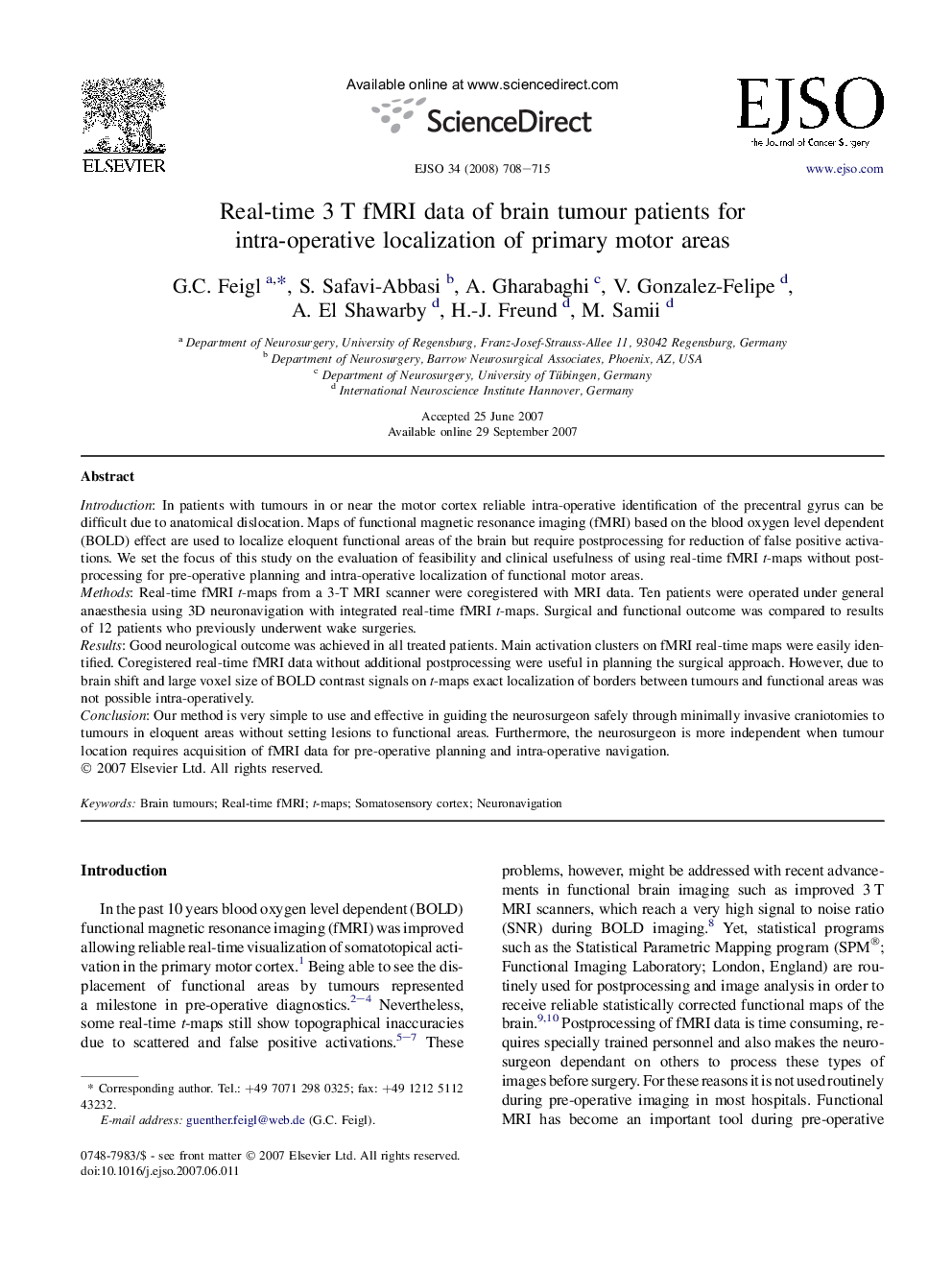| Article ID | Journal | Published Year | Pages | File Type |
|---|---|---|---|---|
| 3987021 | European Journal of Surgical Oncology (EJSO) | 2008 | 8 Pages |
IntroductionIn patients with tumours in or near the motor cortex reliable intra-operative identification of the precentral gyrus can be difficult due to anatomical dislocation. Maps of functional magnetic resonance imaging (fMRI) based on the blood oxygen level dependent (BOLD) effect are used to localize eloquent functional areas of the brain but require postprocessing for reduction of false positive activations. We set the focus of this study on the evaluation of feasibility and clinical usefulness of using real-time fMRI t-maps without postprocessing for pre-operative planning and intra-operative localization of functional motor areas.MethodsReal-time fMRI t-maps from a 3-T MRI scanner were coregistered with MRI data. Ten patients were operated under general anaesthesia using 3D neuronavigation with integrated real-time fMRI t-maps. Surgical and functional outcome was compared to results of 12 patients who previously underwent wake surgeries.ResultsGood neurological outcome was achieved in all treated patients. Main activation clusters on fMRI real-time maps were easily identified. Coregistered real-time fMRI data without additional postprocessing were useful in planning the surgical approach. However, due to brain shift and large voxel size of BOLD contrast signals on t-maps exact localization of borders between tumours and functional areas was not possible intra-operatively.ConclusionOur method is very simple to use and effective in guiding the neurosurgeon safely through minimally invasive craniotomies to tumours in eloquent areas without setting lesions to functional areas. Furthermore, the neurosurgeon is more independent when tumour location requires acquisition of fMRI data for pre-operative planning and intra-operative navigation.
